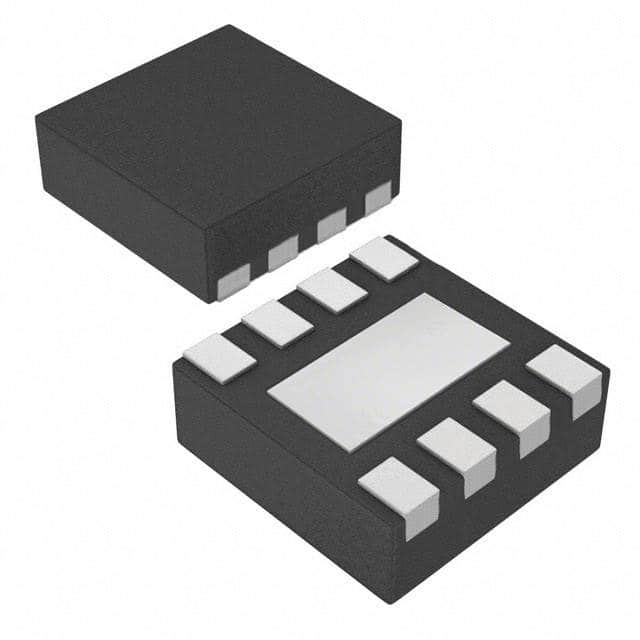Viz Specifikace pro podrobnosti o produktu.

LT3791IFE-1#PBF
Product Overview
Category
The LT3791IFE-1#PBF belongs to the category of integrated circuits (ICs) used in power management applications.
Use
This IC is specifically designed for high voltage, high power LED driver applications. It provides a compact and efficient solution for driving multiple LEDs in series or parallel configurations.
Characteristics
- High voltage capability: The LT3791IFE-1#PBF can handle input voltages up to 100V, making it suitable for various LED lighting applications.
- High efficiency: With its synchronous rectification topology, this IC achieves high conversion efficiency, minimizing power losses.
- Flexible dimming control: The LT3791IFE-1#PBF supports both analog and PWM dimming, allowing precise control over LED brightness.
- Fault protection: It incorporates various protection features such as overvoltage protection, overcurrent protection, and thermal shutdown, ensuring reliable operation and safeguarding the LEDs.
Package
The LT3791IFE-1#PBF is available in an industry-standard 28-lead TSSOP package, which offers good thermal performance and ease of integration into circuit designs.
Essence
The essence of the LT3791IFE-1#PBF lies in its ability to efficiently drive high-power LEDs while providing advanced dimming control and robust protection features.
Packaging/Quantity
This IC is typically sold in reels containing 250 units per reel.
Specifications
- Input Voltage Range: Up to 100V
- Output Current Range: Up to 3A
- Switching Frequency: Adjustable up to 1MHz
- Dimming Control: Analog and PWM
- Operating Temperature Range: -40°C to 125°C
- Package Type: 28-lead TSSOP
Detailed Pin Configuration
The LT3791IFE-1#PBF features a 28-lead TSSOP package with the following pin configuration:
- VIN: Input voltage
- SW: Switch node connection
- GND: Ground reference
- FB: Feedback pin for regulating output voltage
- VCC: Supply voltage for internal circuitry
- RT/CLKOUT: External resistor for setting switching frequency or clock output
- SYNC/MODE: Synchronization input or mode selection
- SS/TRK: Soft-start capacitor connection or tracking input
- ITH: Current sense threshold programming
- VREF: Reference voltage output
- AGND: Analog ground
- COMP: Compensation pin for loop stability
- CS+: Positive terminal of current sense resistor
- CS-: Negative terminal of current sense resistor
- LX: Inductor connection
- PGND: Power ground
Functional Features
LED Driver Control
The LT3791IFE-1#PBF provides precise control over LED brightness through its analog and PWM dimming capabilities. This allows for smooth and flicker-free dimming operation, meeting the requirements of various lighting applications.
Fault Protection
To ensure reliable operation and protect the LEDs, this IC incorporates several fault protection features. These include overvoltage protection (OVP), overcurrent protection (OCP), and thermal shutdown. These safeguards prevent damage to the LEDs and the IC itself in case of abnormal operating conditions.
High Efficiency
With its synchronous rectification topology, the LT3791IFE-1#PBF achieves high conversion efficiency, minimizing power losses and maximizing energy savings. This makes it an ideal choice for power-conscious LED lighting designs.
Advantages and Disadvantages
Advantages
- High voltage capability enables versatile LED driver applications.
- Efficient power conversion reduces energy consumption.
- Flexible dimming control allows precise brightness adjustment.
- Robust fault protection features ensure reliable operation.
Disadvantages
- Limited output current range may not be suitable for high-power LED applications requiring higher currents.
- The 28-lead TSSOP package may pose challenges in space-constrained designs.
Working Principles
The LT3791IFE-1#PBF operates as a boost converter, stepping up the input voltage to drive the LEDs. It utilizes a synchronous rectification topology to achieve high efficiency. The IC regulates the output voltage by adjusting the duty cycle of the internal power switches based on the feedback signal from the FB pin.
Detailed Application Field Plans
The LT3791IFE-1#PBF finds applications in various LED lighting systems, including: - Indoor and outdoor architectural lighting - Automotive lighting - Display backlighting - Street lighting - Signage and advertising displays
Its high voltage capability, efficient operation, and dimming control make it suitable for a wide range of lighting applications.
Detailed and Complete Alternative Models
- LT3791: Similar to LT3791IFE-1#PBF but without the -1#PBF suffix, indicating
Seznam 10 běžných otázek a odpovědí souvisejících s aplikací LT3791IFE-1#PBF v technických řešeních
Sure! Here are 10 common questions and answers related to the application of LT3791IFE-1#PBF in technical solutions:
Q1: What is the LT3791IFE-1#PBF? A1: The LT3791IFE-1#PBF is a high-performance synchronous buck-boost DC/DC converter designed for various power supply applications.
Q2: What is the input voltage range of the LT3791IFE-1#PBF? A2: The input voltage range of the LT3791IFE-1#PBF is typically from 4V to 60V.
Q3: What is the output voltage range of the LT3791IFE-1#PBF? A3: The output voltage range of the LT3791IFE-1#PBF can be adjusted from 0.8V to 60V.
Q4: What is the maximum output current of the LT3791IFE-1#PBF? A4: The LT3791IFE-1#PBF can deliver a maximum output current of up to 10A.
Q5: Can the LT3791IFE-1#PBF operate in both buck and boost modes? A5: Yes, the LT3791IFE-1#PBF can operate in both buck and boost modes, making it suitable for a wide range of applications.
Q6: Does the LT3791IFE-1#PBF have built-in protection features? A6: Yes, the LT3791IFE-1#PBF includes various protection features such as overvoltage protection, overcurrent protection, and thermal shutdown.
Q7: What is the switching frequency of the LT3791IFE-1#PBF? A7: The switching frequency of the LT3791IFE-1#PBF can be programmed from 100kHz to 1MHz.
Q8: Can the LT3791IFE-1#PBF be synchronized with an external clock? A8: Yes, the LT3791IFE-1#PBF can be synchronized with an external clock signal for better system integration.
Q9: Is the LT3791IFE-1#PBF suitable for automotive applications? A9: Yes, the LT3791IFE-1#PBF is designed to meet the requirements of automotive applications and operates over a wide temperature range.
Q10: What are some typical applications of the LT3791IFE-1#PBF? A10: The LT3791IFE-1#PBF can be used in various applications such as LED lighting, battery charging, industrial power supplies, and automotive systems.
Please note that the answers provided here are general and may vary depending on specific design considerations and requirements. It is always recommended to refer to the datasheet and consult with technical experts for accurate information and application-specific guidance.

